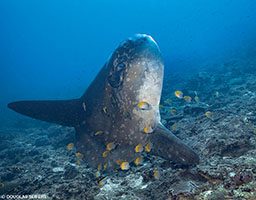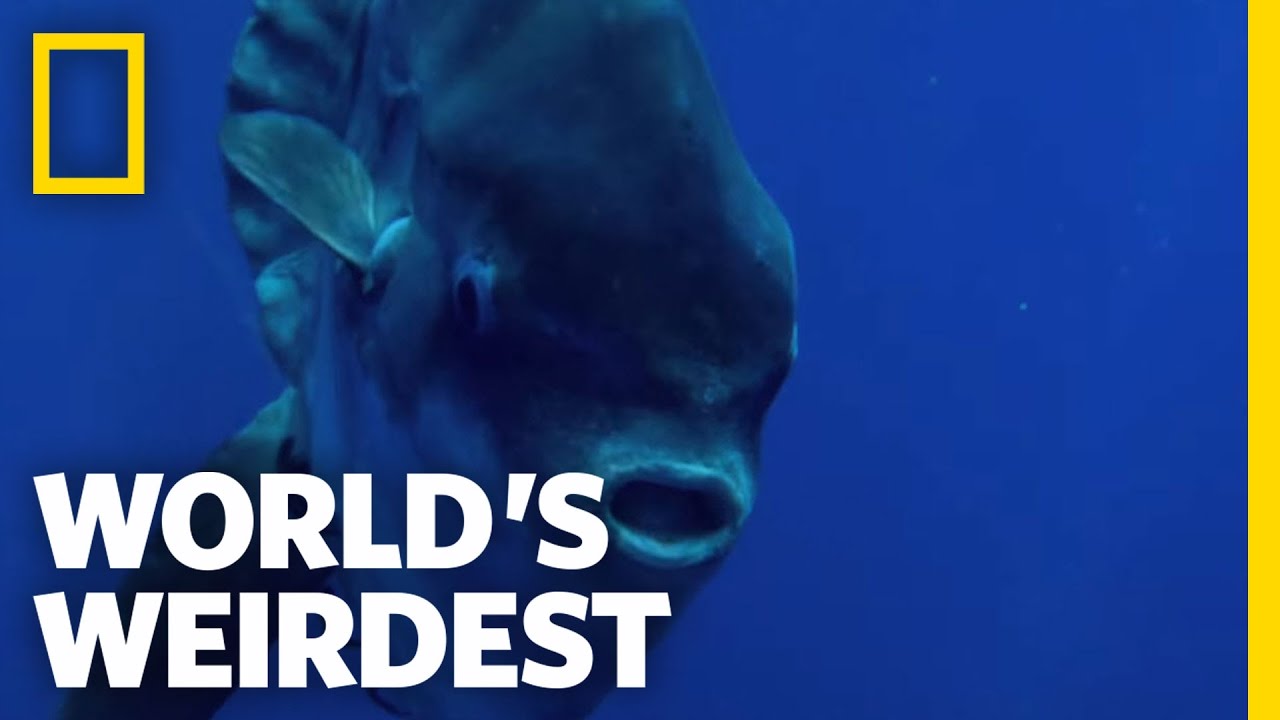Between July and October at a few deep and current-swept sites off Bali’s satellite islands, thousands of divers seek encounters with one of the oddest fish in the sea: the ocean sunfish, or mola.
Although the ocean sunfish is related to the pufferfish, boxfish and triggerfish, it is like no other. It lacks a swim bladder, having instead an incompressible, gelatinous, subcutaneous tissue that can make up as much as 44 percent of its mass. This tissue along with the animal’s skin, which can be up to 8 inches thick in larger molas, render it neutrally buoyant at any depth.
The sunfish is the most fecund fish in the ocean; one 4-foot-long female was found to have 300 million eggs in its ovaries. By the time an egg becomes a full adult, the fish will have increased in weight 60 million times.
Although many English speakers refer to it as a sunfish, it’s known in some other European languages as a moonfish. Its family name, Molidae, and genus name, Mola, are derived from the Latin word for millstone, as its physique is reminiscent of a large disc. But it looks much more like a swimming head with a conspicuously tall dorsal fin, a long anal fin and no discernable tail. A pseudotail, called a clavus, functions more or less as a rudder, but all the swimming power comes from the synchronized beating of its two large fins. The fins are even powerful enough to enable the sunfish to breach the water’s surface and briefly launch itself into the air — no mean feat for the largest bony fish in the sea.

In addition to an unusual shape, sunfish have large eyes and large, puckered mouths, which they are physically unable to close completely. Their bizarre appearance and great size (they can measure more than 10 feet from fin tip to fin tip) and the fact that they’re not encountered very often have made them a bucket-list attraction for many divers who visit Bali.
The reason sunfish are not often encountered is that their preferred habitat is the pelagic realm of open ocean and deep water. They feed wherever jellyfish are most abundant, and this means they’re often far from sport-diving sites. They are sometimes seen at the surface, warming themselves after forays into the chilly depths. These predatory forays into the deep expose sunfish to the many parasites that prey on them and thus eventually lead the fish to the cleaning stations at which divers find them.
Bali’s pioneering dive operations discovered many cleaning stations in the 1980s and 1990s, and word has spread. Now hordes of divers from around the world descend on Crystal Bay, Blue Corner, Toyapakeh and other sites with active cleaning stations for five months each year.
The sunfish season is the result of a seasonal upwelling driven by the southeast monsoon. The monsoon brings cold water and the molas that inhabit it into proximity with the warm tropical water that supports the coral reef cleaning-station fishes. But the thermocline where these waters meet is often quite deep (130 feet or more), and the water below it can be very cold (63°F or even colder). As if the depth and temperature were not enough, many of these sites lie at the frontiers of extremely powerful currents, including downdraft currents, that have caused the deaths of divers.
On really crowded days 100 divers might be searching for sunfish at Bali’s deep cleaning stations and jockeying for position within a relatively small area. There is a code of conduct that’s meant to prevent undue disturbance of the fish, but compliance is voluntary, and overzealous or selfish divers sometimes spook them.
Much about sunfish is still unknown. It was only recently determined that the fish found on Bali’s cleaning stations are not the cosmopolitan ocean sunfish, Mola mola, but rather the southern sunfish, Mola ramsayi. A photo identification research project is under way in Bali, and preliminary findings suggest that the sunfish there are resident year-round but are only seen during mola season, when the water temperature brings them into sport-diving depths.
Explore More
| © Alert Diver — Q3 2017 |

